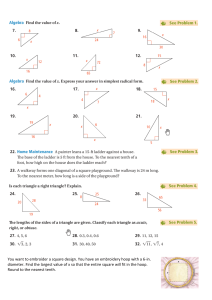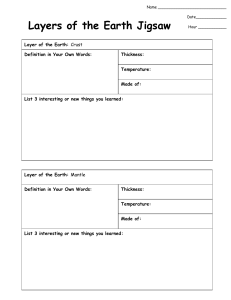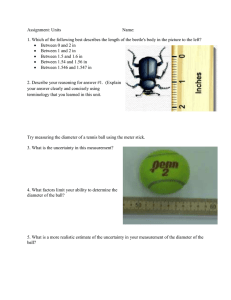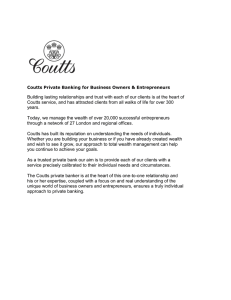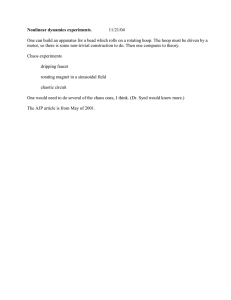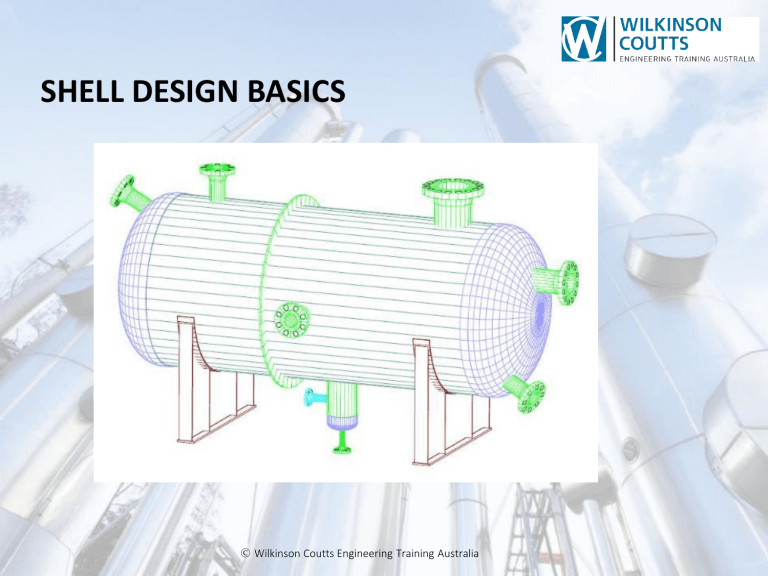
SHELL DESIGN BASICS © Wilkinson Coutts Engineering Training Australia TERMINOLOGY FOR CYLINDERS IMPORTANT: Note how AS 1210 Section 3.7.3 gives 3 different equations depending on the diameter used. Other diameters are Dm – Mean diameter and Do – Outside diameter Internal Diameter D P = Internal pressure P f = Maximum allowable stress value t = Minimum calculated thickness of shell AICIP exam questions only use mean diameter equations © Wilkinson Coutts Engineering Training Australia REMEMBER Hoop Stress is normally twice that of Axial Stress, so HOOP STRESS RESISTANCE is the main design parameter. Hoop stress is trying to split the vessel along it’s length, ie acting on a longitudinal weld. The thickness necessary to withstand the Circumferential or Hoop Stress is TWICE that required to withstand the Longitudinal Stress © Wilkinson Coutts Engineering Training Australia SHELL DESIGN BASICS Principal stresses are: Hoop Stress and Axial Stress © Wilkinson Coutts Engineering Training Australia Sect. 3.7.3 (a) BASIC EQUATION For Hoop Stress (acting on longitudinal joints) t= PDm 2fη This transposes when you want to find P P = 2fηt Dm P = Internal pressure Dm = Mean diameter REMEMBER f = Design (allowable) stress η = Joint efficiency factor © Wilkinson Coutts Engineering Training Australia The pressure in the cylinder is trying to split the cylinder along its length: Sect. 3.7.3 (b) BASIC EQUATION For Longitudinal (Axial) Stress acting on the circumferential joints (e.g. head-to-shell) The pressure on the ends is trying to elongate the cylinder t= PDm 4fη Again, this transposes when you want to find P P = 4fηt Dm If you compare the two equations, you will notice that the thickness required for Axial Stress is roughly half that for Hoop Stress. Ie multiply t(hoop) x ½ ~ t(axial) © Wilkinson Coutts Engineering Training Australia SPHERICAL VESSELS Section 3.7.4 also covers spherical vessels For spherical vessels, the stresses are the same in all planes and directions so there’s only one set of formulae to consider t= PDm 4fη Again, this transposes when you want to find P P = 4fηt Dm You will notice that this is the same equation as for Axial Stress, as spheres do not experience Hoop Stress. © Wilkinson Coutts Engineering Training Australia CODE CALCULATED THICKNESS The minimum thickness calculated from the AS 1210 Section 3.7.3 equations is referred to as: Minimum Calculated Thickness It is the minimum thickness required for pressure retainment due to the governing stresses (ie normally Hoop Stress). It does not contain corrosion allowances, mill under-tolerance allowances, nor material manufacturing tolerances. Do not confuse it with other AS 4942 thickness definitions as; • Minimum Required Thickness • Nominal Thickness • Required Thickness © Wilkinson Coutts Engineering Training Australia OVERRIDING THICKNESS REQUIREMENTS There are a few overriding thickness requirements in Table 3.4.3. These set absolute minimum allowable thicknesses (irrespective of what the calculations say). Look at AS 1210 Table 3.4.3 and note the following minimums: 2.0mm minimum MMA and SAW welded vessels 2 x any minimum for lethal contents 2.4mm for larger (Do greater than 1000mm) vessels regardless of welding method © Wilkinson Coutts Engineering Training Australia
